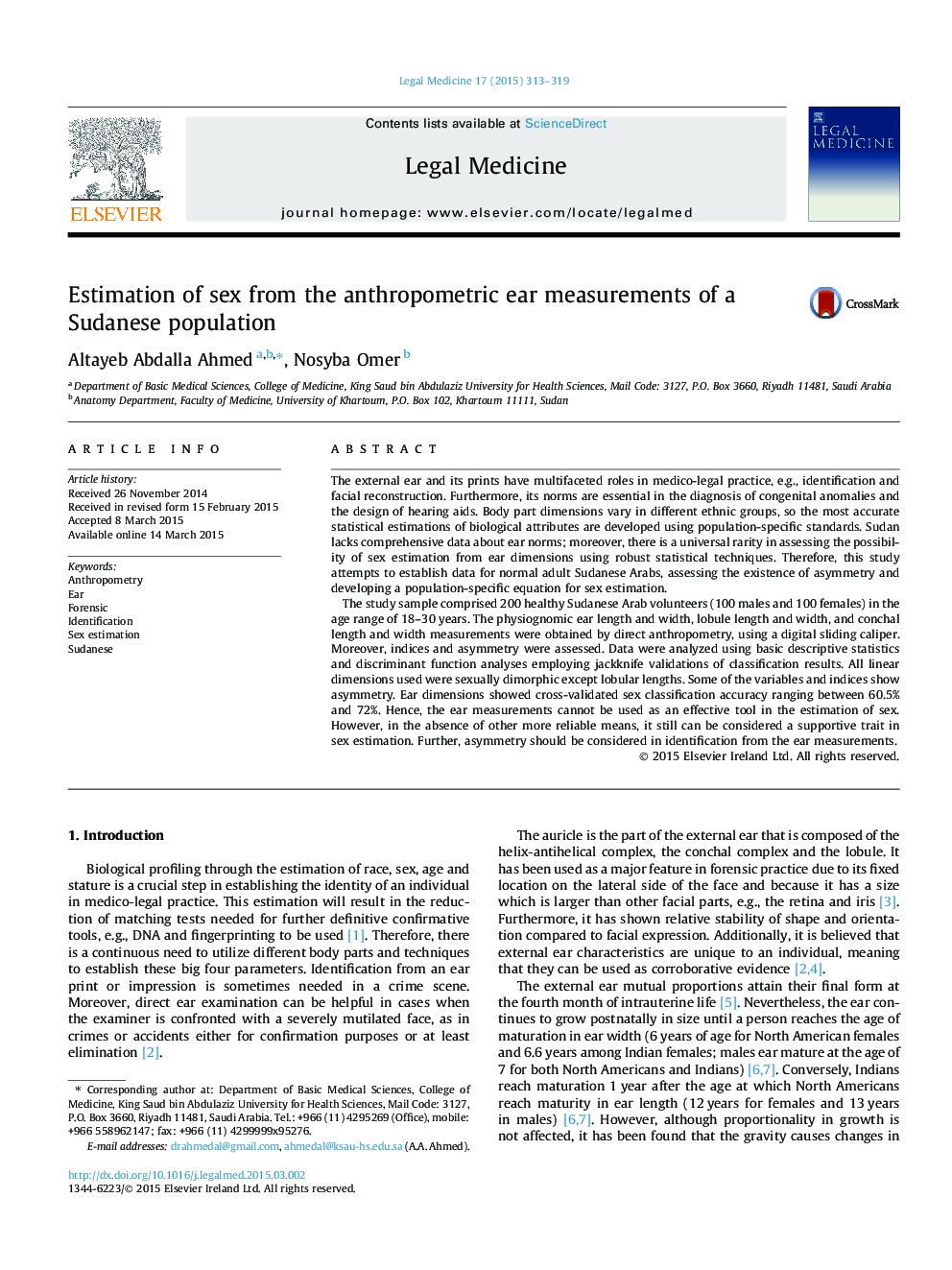| کد مقاله | کد نشریه | سال انتشار | مقاله انگلیسی | نسخه تمام متن |
|---|---|---|---|---|
| 103537 | 161386 | 2015 | 7 صفحه PDF | دانلود رایگان |
• Ear dimensions are sexually dimorphic in Sudanese Arabs except lobular lengths.
• Some of the ear dimensions and indices show asymmetry.
• We derived discriminant functions for estimating sex in a Sudanese population.
• The cross-validated sex classification accuracy ranging between 60.5% and 72%.
The external ear and its prints have multifaceted roles in medico-legal practice, e.g., identification and facial reconstruction. Furthermore, its norms are essential in the diagnosis of congenital anomalies and the design of hearing aids. Body part dimensions vary in different ethnic groups, so the most accurate statistical estimations of biological attributes are developed using population-specific standards. Sudan lacks comprehensive data about ear norms; moreover, there is a universal rarity in assessing the possibility of sex estimation from ear dimensions using robust statistical techniques. Therefore, this study attempts to establish data for normal adult Sudanese Arabs, assessing the existence of asymmetry and developing a population-specific equation for sex estimation.The study sample comprised 200 healthy Sudanese Arab volunteers (100 males and 100 females) in the age range of 18–30 years. The physiognomic ear length and width, lobule length and width, and conchal length and width measurements were obtained by direct anthropometry, using a digital sliding caliper. Moreover, indices and asymmetry were assessed. Data were analyzed using basic descriptive statistics and discriminant function analyses employing jackknife validations of classification results. All linear dimensions used were sexually dimorphic except lobular lengths. Some of the variables and indices show asymmetry. Ear dimensions showed cross-validated sex classification accuracy ranging between 60.5% and 72%. Hence, the ear measurements cannot be used as an effective tool in the estimation of sex. However, in the absence of other more reliable means, it still can be considered a supportive trait in sex estimation. Further, asymmetry should be considered in identification from the ear measurements.
Journal: Legal Medicine - Volume 17, Issue 5, September 2015, Pages 313–319
